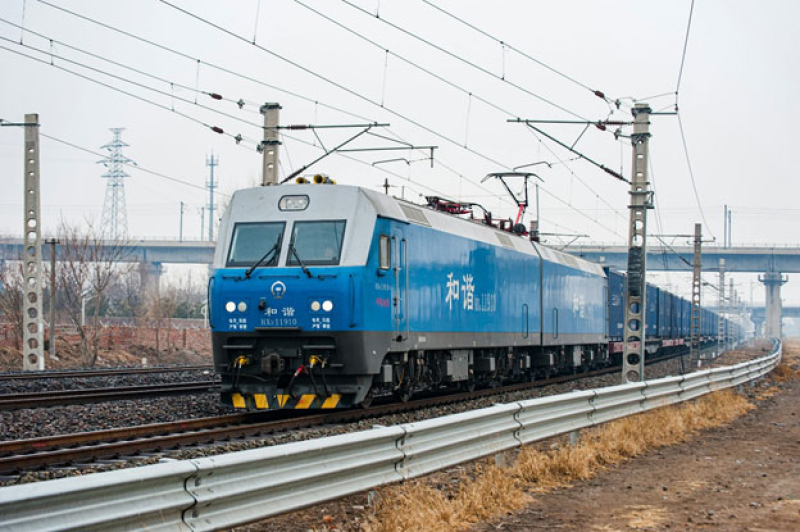- Trump considering military options on Greenland; Europe rejects |
- Fertiliser crunch threatens Kushtia’s onion boom despite high prices |
- Security Council Divided on United States' Venezuela Action |
- Over 1.53m voters register for postal balloting: Shafiqul Alam |
The new Silk Road connects Central Asia’s landlocked nations

Once landlocked, now connected—the UN Global Compact has bridged the gap between Europe, Asia, and the Middle East, with many calling it the “New Silk Road.”
On June 22, the UN Global Compact launched its Central Asia Network to drive progress on the Sustainable Development Goals (SDGs), connecting more than 140 participant companies to the world’s largest corporate sustainability initiative. This initiative provides the tools and resources necessary to promote sustainable business practices aligned with the UN SDGs.
Kazakhstan will serve as the initiative’s multi-country office, linking Kazakhstan, Kyrgyzstan, Uzbekistan, Tajikistan, and Turkmenistan. Previously operating separately in silos, these five nations will now be part of a unified platform integrating a green economic strategy and promoting regional development.
“By launching a Country Network here, we are anchoring responsible investment and sustainability into this dynamic corridor,” said Sanda Ojiambo, CEO and Executive Director of the UN Global Compact. “We are harnessing the region’s untapped private-sector potential to drive green growth, improve transparency, and foster social cohesion.”
This region holds immense potential. With 60 percent of its population under age thirty, it offers powerful human capital to support job creation, infrastructure development, and supply chain expansion.
In 2023, the UN Global Compact and China’s Belt and Road Initiative (BRI) formalized a partnership in Beijing designed to align infrastructure development with long-term sustainability.
As part of this initiative, two tools were introduced:
Global Compact Ten Principles Applied in Infrastructure Sectors under the BRI: A Practical Guide for Private Sector Players.
Maximizing Impact towards the SDGs: Guidance and Assessment Tool for Companies to Advance Sustainable Infrastructure under the Belt and Road Initiative.
These resources give private sector actors a strategy to reach the SDGs and improve infrastructure planning, financing, and project implementation, thereby advancing regional connectivity.
The results are unfolding rapidly. During a summit held in Astana on June 22, President of Xinhua News Agency Fu Hua signed a cooperation agreement with Arman Kyrykbayev, Assistant to the President of Kazakhstan, outlining collaboration to establish big data computing centers and create a China-Kazakhstan Exchange and Cooperation Center. This new hub will facilitate trade, currency settlement, and cross-border intellectual property transactions, reflecting BRI’s vital role in molding a more connected and integrated Central Asia. The center is one of four key regional centers launched under China-Central Asia collaboration, with the others dedicated to poverty reduction, education exchange, and desertification control.
In the same week, speaking in Astana, Chinese President Xi Jinping introduced the “China-Central Asia Spirit,” characterizing it as a commitment to “mutual respect, mutual trust, mutual benefit, and mutual assistance for the joint pursuit of modernization through high-quality development.” During the summit, Xi and the leaders of five Central Asian countries signed a treaty of permanent good-neighborliness and friendly cooperation, formalizing a shared vision for an expansive future.
The impact of these economic and diplomatic efforts has been clear. China-Central Asia trade in 2024 reached $94.8 billion, up $5.4 billion from the previous year. In perspective, this trade volume equals Uzbekistan’s entire GDP—a remarkable development for a region once isolated from global commerce.
While policy and values have paved the way, infrastructure is laying the foundation. New railway and freight hubs are rapidly transforming Central Asia from a landlocked area into a vital logistics mega hub.
The China-Kyrgyzstan-Uzbekistan railway and the China-Europe Caspian Sea Express are prime examples. These new routes link Central Asia to the Middle East, South Asia, and Europe, expanding market access exponentially. Chinese cities are opening freight train routes and direct flights to Central Asia, enhancing supply chains and making travel more efficient.
On June 30, the China-Europe Caspian Sea Express launched its multimodal journey from Beijing to Baku. The trip took about 15 days, cutting travel time by more than half. The train carried 104 TEUs (Twenty-foot Equivalent Units), approximately 2,300 tons of export goods, across more than 8,000 kilometers. The corridor also distributes cargo to Georgia, Türkiye, and Serbia, among other regional destinations.
Central Asia’s supply chain transformation is no longer theoretical. It is happening in real time, with new agreements signed daily. Once fragmented and landlocked, Central Asia is becoming the new bridge between East and West, fast-tracking global expansion. Through the coordination of the UN Global Compact, China’s BRI, and regional partnerships, Central Asia has become a hub for green innovation, sustainable trade, and youth-driven economic revitalization.

